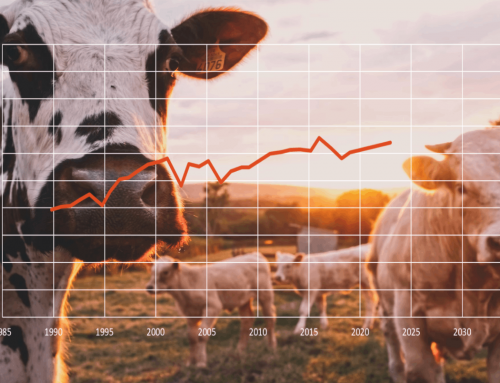A number of times during the course of 2019 I’ve been asked to present keynotes or sit on panels at events & conferences on the ‘Future of Work’ and labour across a range of industries. It’s a hot topic with various authors churning out topical business books on the subject – largely capitalising on the fear of the future present in the working populous.
In the Australian market, on each occasion I can trace the origin of the thought process of the event organisers and the appetite for the content from the attendees back, in some part, to a 2015 report that was published by CEDA (Committee for Economic Development of Australia).
For those unfamiliar with CEDA they are an independent, not-for-profit with a diverse member base of corporates researching policy across key areas of technology and data; workplace, workforce and collaboration; population; critical services and institutions.
When they released a report in 2015 entitled “Australia’s future workforce?” (I suspect the inclusion of the question mark at the end of the title was the subject of significant internal discussion prior to publication) CEDA found that “more than five million jobs, almost 40 per cent of Australian jobs that exist today, have a moderate to high likelihood of disappearing in the next 10 to 15 years due to technological advancements”. The media loved this and have run with the theme ever since.
I don’t dispute the tremendous upheaval that is one of the potential experiences in the years to come. I do think that a likely impact is that more jobs will be created than will disappear and in those circumstances the disruption will come from the new jobs appearing in different geographic locations from where the jobs are lost but that’s a topic for another day.
The insights from CEDA are not based on flawed research or a doomsday prediction for the sake of attracting attention, but the consumption of the report’s content is rarely explored in depth. Most parties are interested in the drama of the labour force apocalypse and less interested in the innovation and leadership opportunities presented to refresh and renew areas of the economy and most importantly instigate completely new industries, skills and labour force requirements.
Earlier this month in Perth, CEDA ran another event on the future of the workforce with representatives from McKinsey, Rio Tinto, Bunnings and Transition Hub taking the stage to give their thoughts. The Western Australian’s Stuart McKinnon (their resident mining correspondent) wrote a piece and opened with CEDA’s 5-year-old statement about 5 million jobs disappearing in 10 to 15 years. We’re now 5 years into that period so let’s say 5 to 10 years. The piece also starts out with sentiments like ‘disturbing prediction’, ‘thorny issue’, ‘very disruptive’ and more.
When we dig a little deeper into the discourse between the panelists it would seem that the headline of “Workers Face Future Shock” and others like it aren’t truly representative of the opinions of the captains of industry. McKinsey tell us that automation and technology in the same period can add between $170 billion and $600 billion to the Australian GDP or $15,000 to the incomes of the average Australian.
While you can read the reports and articles for yourself and sort the pessimistic headlines designed to drum up a story, it’s clear from the industry discussions, research, projects and panels I’ve been part of in recent times that there is plenty of upside out there for those inclined to seek it out.
Jobs of today will definitely experience disruption but in reality, there’s millions of new jobs in new fields with new skills to be created in the same window of time.
Our education system is going to have to change its approach to ensure it’s preparing the labour force of the future but it’s not beyond them and they’re working hard on reforms to ensure their continued relevance. The companies our economy relies on aren’t short of things to do to improve their businesses. Plenty of these initiatives leading to better business are currently out of reach due to due to business as usual occupying 100% of their resources.
Business is going to undergo change and job function will alter dramatically, with some of the biggest impacts being the new jobs will not always be in the same location and require the same type of resources as the old jobs. It will undoubtedly be disruptive, uncertain and painful for some portion of society.
Across the window of time CEDA and its participants are examining, automation will have a range of positive impacts. In the next 5 to 10 years technology will eliminate repetitive and lower value tasks freeing up skilled flexible people to tackle the structural, strategic and human centric aspects of our economy that business is currently not addressing. I’m yet to be asked in a panel Q&A “What will my staff do when 20% of their job is automated?”. If the question is posed to me, I’d suggest business model innovation and structural business changes, can be addressed which may have great returns on the cost of labour than current activities. Diversification of markets, new product development and a range of other areas are waiting opportunities to invest this new-found labour capacity.
In truth not all businesses will seize the opportunities presented to them in this period of uncertainty. A lack of skilled and insightful leaders will see a range of businesses suffer when automation’s impacts are felt. It’s the leaders and innovators with appetite for change, some risk, expansion, new service offerings and business models that will result in a new direction and growth across a range of industries. It’s growth in the skills of leaders that will ensure the viability of the companies of 2025 – this will be the key in ensuring 5 million disrupted jobs are replaced with 5.5 million new jobs that we can barely conceive of at this point. It’s this type of leadership in business that will access the $170 billion and $600 billion to the Australian GDP or $15,000 to the incomes of the average Australian McKinsey are forecasting.
While I’m not blind to the impact on individuals, at a macro level a little revolution is a good thing.
Personally, the opportunity to embrace automation and increasing levels of smart AI driven systems as part of my day to day offers far more upside than down.
Brett Wiskar
Chief Future Officer




